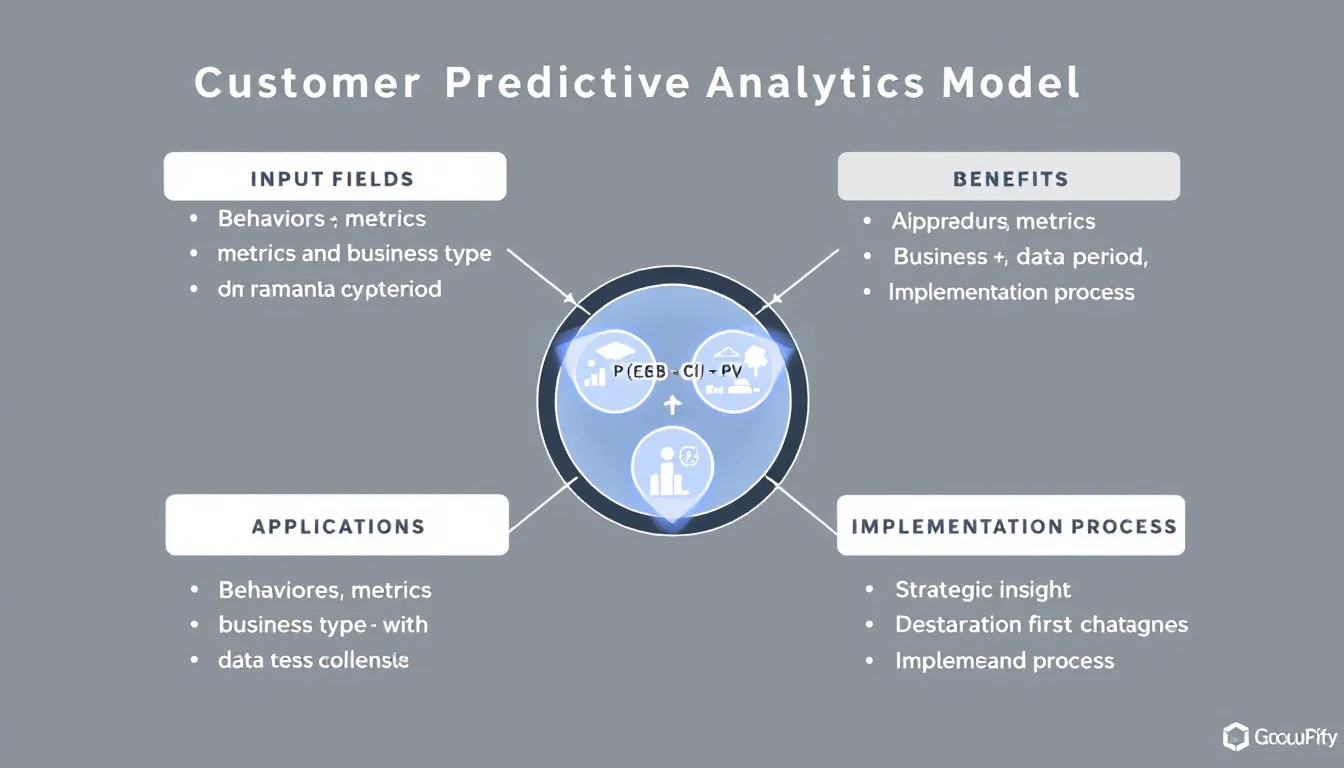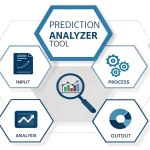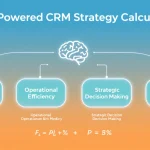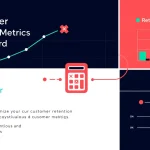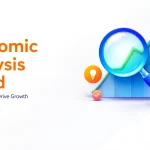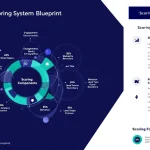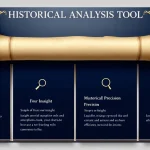Predictive Analytics Model
Is this tool helpful?
How to Use the Customer Predictive Analytics Model Tool Effectively
This predictive analytics tool helps you identify valuable customers by analyzing behavior patterns and engagement metrics. Here’s how to fill out each input to get meaningful insights for your business:
Input Fields Explained
- Customer Behaviors to Track: Enter specific actions your customers take that impact value. For example:
- Mobile app logins, product demo requests
- Referral program participation, content downloads
- Engagement Metrics: Describe key indicators measuring how customers interact with your business. For example:
- Social media shares, email open rates
- Average session duration, newsletter click rates
- Business Type: Specify your industry to tailor the analysis context. Examples:
- Financial Services
- Educational Technology
- Historical Data Period: Choose the timeframe that covers your available data. Examples:
- 1 year of sales transactions
- 24 months of customer engagement logs
- Business Goals: Describe the outcomes you want from your predictive analytics. Examples:
- Boost upsell opportunities among loyal customers
- Identify inactive customers for targeted campaigns
Introduction to the Customer Predictive Analytics Model
This Customer Predictive Analytics Model transforms raw customer data into strategic insights. It uses statistical methods to highlight behaviors and engagement patterns that predict which customers will bring the most value.
By applying this tool, you improve your marketing focus, allocate resources better, and connect with customers proactively before issues arise.
Key Benefits of Using the Predictive Analytics Tool
- Predict customer engagement and prioritize outreach efforts
- Reduce churn through early identification of at-risk customers
- Enhance personalization with data-driven customer segmentation
- Streamline marketing spend by focusing on high-value prospects
- Leverage historical data to forecast future customer behavior
Understanding the Predictive Model’s Core Calculations
The model uses key mathematical formulas to score and predict customer value and engagement. These include probability, weighted impact scoring, and value prediction:
Probability estimation of engagement given specific behaviors:
Calculation of the overall Customer Impact (CI) score based on weighted metrics:
Prediction of customer value adjusted for risk:
Where:
- P(E|B): Probability of engagement given a behavior
- CI: Customer Impact score
- PV: Predicted Value of a customer
- CLV: Customer Lifetime Value
- EP: Engagement Probability
- r: Risk adjustment factor
Practical Applications of the Customer Predictive Analytics Tool
E-commerce Use Case
An online apparel store used the tool to analyze customer browsing and purchasing patterns:
- Tracked Behaviors: Wishlist activity, product reviews
- Engagement Metrics: Repeat purchase rate, average cart size
- Outcome: 30% increase in personalized offers’ conversion rates
SaaS Provider Implementation
A SaaS company improved customer retention by monitoring usage and support ticket data:
- Tracked Behaviors: Feature adoption, customer feedback submissions
- Engagement Metrics: Weekly active users, onboarding progress scores
- Result: 25% reduction in subscription cancellations within six months
Frequently Asked Questions About the Predictive Analytics Model
Which industries benefit most from this predictive analytics tool?
Any industry that collects customer interaction data can use this tool. It works well for e-commerce, SaaS, healthcare, financial services, and professional services by adapting to different data sets and goals.
How long does it take to get actionable insights?
You get insights as soon as you submit your customer behaviors, metrics, and historical data. The tool quickly processes inputs to provide relevant predictions.
Can I add custom metrics and behaviors?
Yes, you can tailor the tool to track any customer actions and engagement measures important to your business model and marketing objectives.
How does this tool help reduce customer churn?
The tool spots early signs of disengagement by analyzing patterns in behaviors and metrics. You can then take targeted steps to retain customers before they leave.
What makes this predictive analytics model different from standard tools?
Unlike traditional analytics that focus solely on past data, this model uses predictive calculations combined with customizable inputs, giving you foresight into customer actions and value.
Is integration with CRM systems possible?
Yes, this tool works alongside existing CRM platforms to enrich customer profiles with predictive scores and enhance engagement strategies.
What kind of return on investment can I expect?
Businesses typically see higher retention rates, better conversion, and improved customer lifetime value after applying insights from this tool to marketing and sales efforts.
Important Disclaimer
The calculations, results, and content provided by our tools are not guaranteed to be accurate, complete, or reliable. Users are responsible for verifying and interpreting the results. Our content and tools may contain errors, biases, or inconsistencies. Do not enter personal data, sensitive information, or personally identifiable information in our web forms or tools. Such data entry violates our terms of service and may result in unauthorized disclosure to third parties. We reserve the right to save inputs and outputs from our tools for the purposes of error debugging, bias identification, and performance improvement. External companies providing AI models used in our tools may also save and process data in accordance with their own policies. By using our tools, you consent to this data collection and processing. We reserve the right to limit the usage of our tools based on current usability factors.
